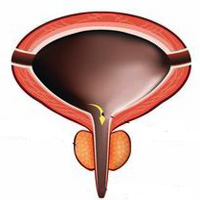 Smart Citations
Smart CitationsSee how this article has been cited at scite.ai
scite shows how a scientific paper has been cited by providing the context of the citation, a classification describing whether it supports, mentions, or contrasts the cited claim, and a label indicating in which section the citation was made.
Physiopathology of the diabetic bladder
Objective: To investigate the incidence of diabetic cystopathy in relation to age, gender, type of diabetes, duration of diabetic disease and clinical evidence of peripheral neuropathy and to analyze the physiopathology of the various forms of diabetic cystopathy due to sensory impairment, motor-sensory impairment, motor impairment and hyperreflexia.
Materials and methods: In a retrospective multicenter cohort study the medical records of a cohort of 126 diabetic patients with (128 patients) or without (48 patients) urological symptoms were analyzed. Patients were observed at the Città di Alessandria Clinic of Policlinico di Monza and/or at the outpatient clinic of Alessandria Hospital from June 2018 to June 2020. The study excluded patients with central and/or peripheral neuropathy, spina bifida (mylomeningocele or meningocele) or spina bifida occulta; with persistent urinary infections; in anticholinergic treatment for enteric dysfunctions; in medical treatment for cervical-prostatic-urethral obstruction; with vaginal and/or rectal prolapse of II, III, IV degree; with previous spinal or pelvic surgery including radical prostatectomy, Wertheim hysterectomy or colorectal surgery. All the patients were studied with computed tomography (CT) scan of the urinary tract, voiding cystourethrography (VCUG), uroflowmetry, cystomanometry with intrinsic pressure assessment and compliance evaluation, electromyography (EMG) of the anal sphincter, pressure flow analysis, urethral pressure profile and, when advised, pharmacological tests.
Results: Out of 126 diabetic patients, 48 did not show any signs or symptoms of urine voiding dysfunction; 30 were men and 18 women with an average age of 62.6 years; 20 had type I diabetes and were in treatment with insulin and 28 type II diabetes treated with oral hypoglycemic medication. The remaining 78 patients (48 men and 30 women), with an average age of 64.8 years, presented urological symptoms; 31 had type I diabetes and 47 had II type diabetes.
Conclusions: Diagnosis of the various forms of diabetic cystopathy and early treatment decreases complications and consequently accesses to outpatient facilities and hospital admissions, resulting in an improved quality of life.
Downloads
How to Cite
PAGEPress has chosen to apply the Creative Commons Attribution NonCommercial 4.0 International License (CC BY-NC 4.0) to all manuscripts to be published.

 https://doi.org/10.4081/aiua.2020.4.314
https://doi.org/10.4081/aiua.2020.4.314





